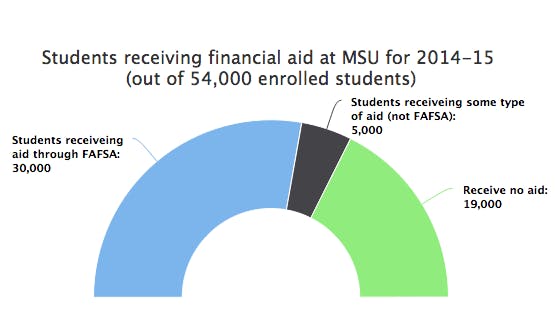Financial aid sees White House reforms, different proposals still in the works

Financial aid has been a topic of discussion for years, mainly focusing on how to make the application process easier and less lengthy for those who are in need of assistance -- but where complications arise is how short is too short for financial aid forms, such as the Free Application for Federal Student Aid or FAFSA.
The White House's Announcement
According to an announcement by United State's Education Secretary Arne Duncan on Monday, the FAFSA will be shorter and the application will be available earlier for students, beginning in October 2016.
According to Duncan, the FAFSA will see some reforms in 2016, including opening the FAFSA application process up in October instead of January when it is currently opened; and requiring tax information from two years prior, instead of using tax information from the previous year.
According to Duncan, the first change was made because currently, when students apply for colleges in the fall and can't apply for the FAFSA until January, they often know what schools they have been accepted to before they know how much financial aid they will qualify for.
The second change, which would use tax information from two years prior instead of the previous year, is being implemented to make use of an IRS- data retrieval tool, where parents and students can log onto the IRS and through FAFSA and the information available will pre fill out some parts of the FAFSA for the students.
The two question approach
Currently the FAFSA is 105 questions long, but a federal proposal by U.S. Sen. Lamar Alexander (R-Tennessee) and Sen. Michael Bennet (D-Colorado), could potentially cut the application down to two questions: What is your family size? What was your household income two years ago?
Val Meyers, the Associate Director of the MSU Financial Aid Office, said that while two questions could give the people administering federal aid a good indication of what a student might be able to afford to pay towards college, it isn't that simple.
“If you’re in a family where you have more assets, and maybe you have a business or maybe you have rental properties, maybe you have stocks or bonds; then that’s really a little too simple for us to really understand what the family could contribute."
"If you make somebody look like they’re very needy, when they’re not, then the resources, which are limited, get divided differently,” Meyers said.
READ MORE
Jonathan Brooks, an MSU advertising senior said he has filled out the FAFSA twice, and the first time he did it, it took him upwards of 45 minutes to an hour -- he said he would be all for shortening the application.
National Association Student Financial Aid Administrators proposal
Instead of the two question application, Meyers said she is in favor of a proposal from the National Association Student Financial Aid Administrators (NASFAA), which would see a tiered application used in which there would be an initial few questions, and then if more information were needed, students would be asked more and so on depending on their responses.
“Now that you’re doing things on the web, it’s much easier to let somebody answer a couple of questions and then based on what their answers are, you say ‘ok, you’re done, or ok you have to answer just these three or four questions or, ok you have to answer a bunch, because depending on what your situation is,’” Meyer said.
She said NASFAA’s proposal would make the application process easier for those in the most need, and a little harder for those who do not have as large of a need for the assistance.
Support student media! Please consider donating to The State News and help fund the future of journalism.



